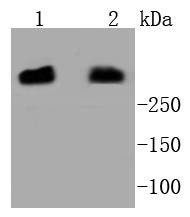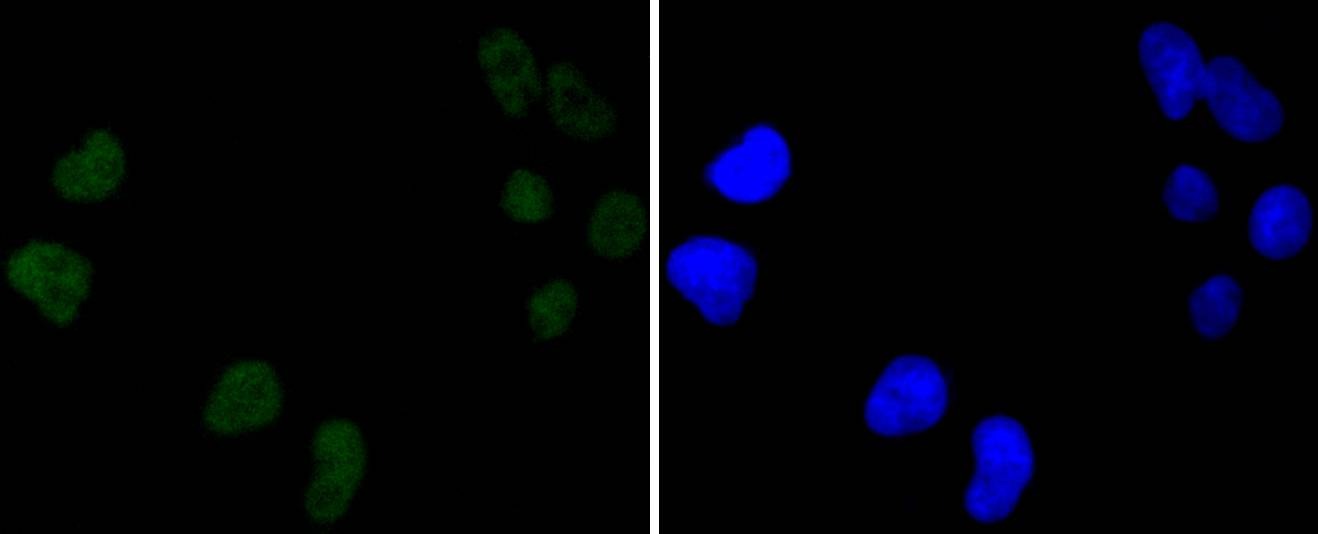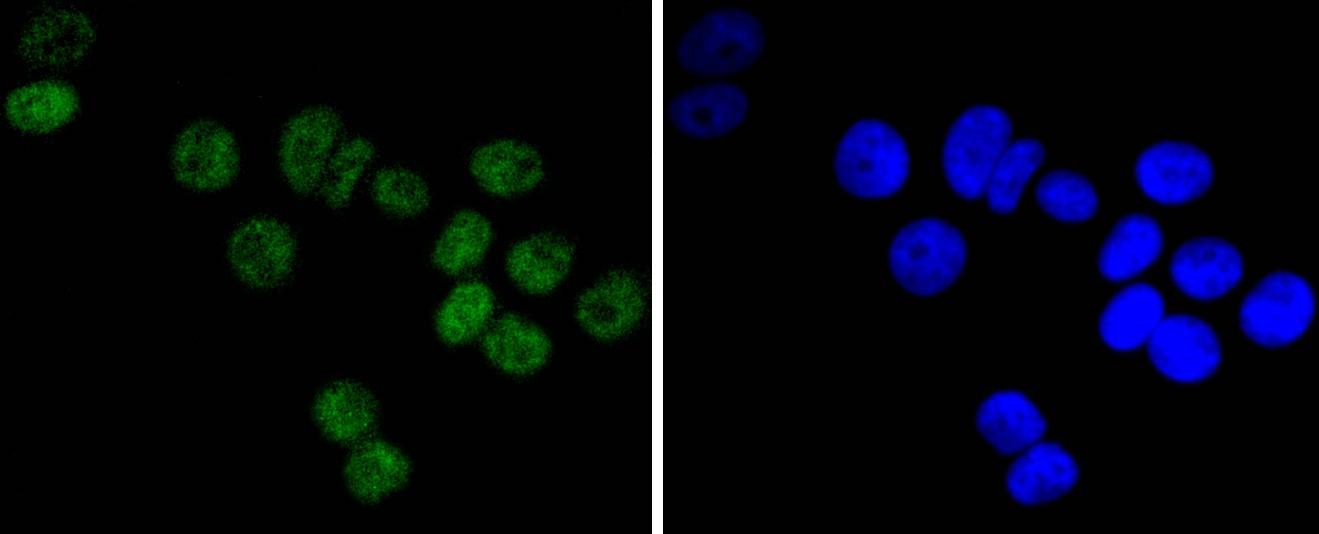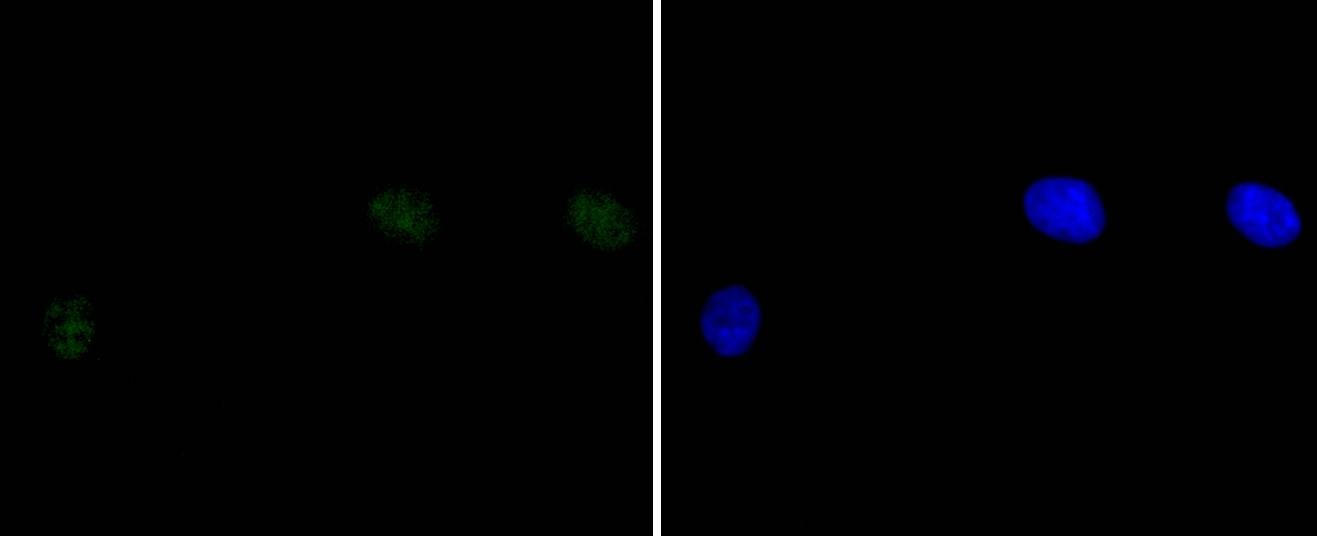Shopping Cart
Remove All Your shopping cart is currently empty
Your shopping cart is currently empty
Anti-PRKDC Antibody (5G885) is a Rabbit antibody targeting PRKDC. Anti-PRKDC Antibody (5G885) can be used in ICC/IF,IHC,WB.
| Pack Size | Price | USA Warehouse | Global Warehouse | Quantity |
|---|---|---|---|---|
| 50 μL | $296 | 7-10 days | 7-10 days | |
| 100 μL | $497 | 7-10 days | 7-10 days |
| Description | Anti-PRKDC Antibody (5G885) is a Rabbit antibody targeting PRKDC. Anti-PRKDC Antibody (5G885) can be used in ICC/IF,IHC,WB. |
| Synonyms | XRCC7, XRCC 7, Protein Kinase DNA Activated Catalytic Polypeptide, PRKDC, PKRDC, p460, p350, IMD26, HYRC1, HYRC 1, HYRC, Hyperradiosensitivity complementing 1, Hyper radiosensitivity of murine scid mutation, DNPK1, DNPK 1, DNA-PKcs, DNAPK catalytic subunit, DNAPK, DNA PK catalytic subunit, DNA dependent protein kinase catalytic subunit, complementing 1 |
| Ig Type | IgG |
| Clone | 5G885 |
| Reactivity | Human,Mouse,Rat |
| Verified Activity | 1. Western blot analysis of DNA PKcs on different lysates using anti-DNA PKcs antibody at 1/1,000 dilution. Positive control: Lane 1: Hela, Lane 2: MCF-7. 2. ICC staining DNA PKcs in Hela cells (green). The nuclear counter stain is DAPI (blue). Cells were fixed in paraformaldehyde, permeabilised with 0.25% Triton X100/PBS. 3. ICC staining DNA PKcs in MCF-7 cells (green). The nuclear counter stain is DAPI (blue). Cells were fixed in paraformaldehyde, permeabilised with 0.25% Triton X100/PBS. 4. ICC staining DNA PKcs in A549 cells (green). The nuclear counter stain is DAPI (blue). Cells were fixed in paraformaldehyde, permeabilised with 0.25% Triton X100/PBS.     |
| Application | |
| Recommended Dose | WB: 1:1000-2000; IHC: 1:50-200; ICC/IF: 1:50-200 |
| Antibody Type | Monoclonal |
| Host Species | Rabbit |
| Construction | Recombinant Antibody |
| Purification | ProA affinity purified |
| Appearance | Liquid |
| Formulation | 1*TBS (pH7.4), 1%BSA, 40%Glycerol. Preservative: 0.05% Sodium Azide. |
| Research Background | The phosphatidylinositol kinase (PIK) family members fall into two distinct subgroups. The first subgroup contains proteins such as the PI 3- and PI 4-kinases and the second group comprises the PIK-related kinases. The PIK-related kinases include Atm, DNA-PKCS and FRAP. These proteins have in common a region of homology at their carboxy termini that is not present in the PI 3- and PI 4-kinases. The Atm gene is mutated in the autosomal recessive disorder ataxia telangiectasia (AT) that is characterized by cerebellar degeneration (ataxia) and the appearance of dilated blood vessels (telangiectases) in the conjunctivae of the eyes. AT cells are hypersensitive to ionizing radiation, impaired in mediating the inhibition of DNA synthesis and they display delays in p53 induction. DNA-PK is a heterotrimeric DNA binding enzyme that is composed of a large subunit, DNA-PKCS, and two smaller subunits collectively known as Ku. The loss of DNA-PK leads to defects in DSB repair and V(D)J recombination. FRAP can autophosphorylate on serine and bind to rapamycin/FKBP. FRAP is also an upstream regulator of S6 kinase and has been implicated in the regulation of p27 and p21 expression. |
| Conjucates | Unconjugated |
| Immunogen | Recombinant Protein |
| Uniprot ID |
| Molecular Weight | Theoretical: 469 kDa. |
| Stability & Storage | Store at -20°C or -80°C for 12 months. Avoid repeated freeze-thaw cycles. |
| Transport | Shipping with blue ice. |
| Size | Quantity | Unit Price | Amount | Operation |
|---|

Copyright © 2015-2026 TargetMol Chemicals Inc. All Rights Reserved.